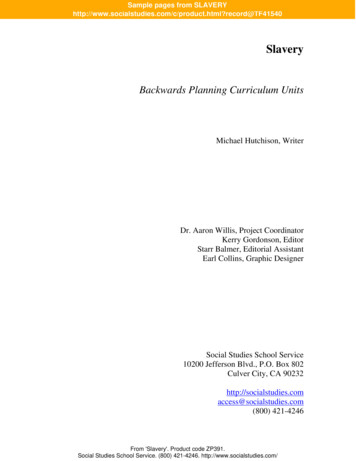
Transcription
Sample pages from ?record@TF41540SlaveryBackwards Planning Curriculum UnitsMichael Hutchison, WriterDr. Aaron Willis, Project CoordinatorKerry Gordonson, EditorStarr Balmer, Editorial AssistantEarl Collins, Graphic DesignerSocial Studies School Service10200 Jefferson Blvd., P.O. Box 802Culver City, CA com(800) 421-4246From 'Slavery'. Product code ZP391.Social Studies School Service. (800) 421-4246. http://www.socialstudies.com/
Sample pages from ?record@TF41540 2008 Social Studies School Service10200 Jefferson Blvd., P.O. Box 802Culver City, CA 90232United States of America(310) 839-2436(800) 421-4246Fax: (800) 944-5432Fax: (310) es.comPermission is granted to reproduce individual worksheets for classroom use only.Printed in the United States of AmericaISBN 978-1-56004-348-5Product Code: ZP391From 'Slavery'. Product code ZP391.Social Studies School Service. (800) 421-4246. http://www.socialstudies.com/
Sample pages from ?record@TF41540TABLE OF CONTENTSIntroduction. IVLecture Notes. S1Student Handouts. H1Backwards Planning Curriculum:Slavery: Backwards Planning Activities.1Project #1: Amistad Mock Trial .3Project #2: Describing the Life of a Slave (An Eyewitness Account).10Project #3: Abolitionist Newspaper Front Pages .16Slavery: Multiple-Choice Quiz .22Slavery: Multiple-Choice Quiz Answer Key.29From 'Slavery'. Product code ZP391.Social Studies School Service. (800) 421-4246. http://www.socialstudies.com/
Sample pages from ?record@TF41540How To Use This UnitBackwards planning offers an innovative yet simple approach to meeting curriculum goals; italso provides a way to keep students engaged and focused throughout the learning process.Many teachers approach history instruction in the following manner: they identify a topicrequired by state and/or national standards, they find materials on that topic, they use thosematerials with their students, and then they administer some sort of standard test at the end ofthe unit. Backwards planning, rather than just starting with a required instructional topic, goes astep further by identifying exactly what students need to know by the end of the unit—the socalled “enduring understandings.” The next step involves assessment: devising ways todetermine whether students have learned what they need to know. The final step involvesplanning the teaching/learning process so that students can acquire the knowledge needed.This product uses backwards planning to combine a PowerPoint presentation, activities thatinvolve authentic assessment, and traditional tests (multiple-choice and essay) into a completecurriculum unit. Although the materials have enough built-in flexibility that you can use them ina number of ways, we suggest the following procedure:1. Start with the “essential questions” listed on slide 2 of the PowerPoint presentation (thesealso appear in the teacher support materials). Briefly go over them with students before gettinginto the topic material. These questions will help students focus their learning and note takingduring the course of the unit. You can also choose to use the essential questions as essayquestions at the end of the unit; one way to do this is to let students know at the outset that oneof the essential questions will be on the test—they just won’t know which one.2. Next, discuss the activities students will complete during the unit. This will also help focustheir learning and note taking, and it will lead them to view the PowerPoint presentation in adifferent light, considering it a source of ideas for authentic-assessment projects.3. Present the PowerPoint to the class. Most slides have an image and bullet pointssummarizing the slide’s topic. The Notes page for each slide contains a paragraph or two ofinformation that you can use as a presentation script, or just as background information for yourown reference. You don’t need to present the entire PowerPoint at once: it’s broken up intoseveral sections, each of which concludes with some discussion questions that echo parts of theessential questions and also help students to get closer to the “enduring understandings.” Spendsome time with the class going over and debating these questions—this will not only helpstudents think critically about the material, but it will also allow you to incorporate differentmodes of instruction during a single class period, offering a better chance to engage students.4. Have students complete one or more of the authentic-assessment activities. These activitiesare flexible: most can be completed either individually or in groups, and either as homework oras in-class assignments. Each activity includes a rubric; many also have graphic organizers. Youcan choose to have students complete the activities after you have shown them the entirePowerPoint presentation, or you can show them one section of the PowerPoint, go over thediscussion questions, and then have students complete an activity.Permission granted to reproduce for classroom use only. 2008 Social Studies School Service. (800) 421-4246. http://socialstudies.comivFrom 'Slavery'. Product code ZP391.Social Studies School Service. (800) 421-4246. http://www.socialstudies.com/
Sample pages from ?record@TF415405. End the unit with traditional assessment. The support materials include a 20-questionmultiple-choice quiz; you can combine this with an essay question (you can use one of theessential questions or come up with one of your own) to create a full-period test.6. If desired, debrief with students by going over the essential questions with them again andremind them what the enduring understandings are.We are dedicated to continually improving our products and working with teachers to developexciting and effective tools for the classroom. We can offer advice on how to maximize the useof the product and share others’ experiences. We would also be happy to work with you on ideasfor customizing the presentation.We value your feedback, so please let us know more about the ways in which you use thisproduct to supplement your lessons; we’re also eager to hear any recommendations you mighthave for ways in which we can expand the functionality of this product in future editions. Youcan e-mail us at access@socialstudies.com. We look forward to hearing from you.Dr. Aaron WillisChief Education OfficerSocial Studies School ServicePermission granted to reproduce for classroom use only. 2008 Social Studies School Service. (800) 421-4246. http://socialstudies.comvFrom 'Slavery'. Product code ZP391.Social Studies School Service. (800) 421-4246. http://www.socialstudies.com/
Sample pages from ?record@TF41540SlaveryPerhaps no single issue divided America as did slavery. Its roots went back to the 17thcentury when slaves were common throughout the colonies. However, slavery was morecommon in the South, where large farms and small population made it necessary to importcheap labor. The so-called “peculiar institution” of slavery came to define the South moreand more during the 19th century.As the colonies grew, slavery became more entrenched. Politicians crafted variouscompromises in an attempt to maintain a union that was “half slave and half free,” butcontinual struggles between pro- and anti-slavery forces made this impossible. By 1861, ithad become obvious that the only way the slavery question could be solved was by civilwar. Finally in 1865, the 13th Amendment to the U.S. Constitution abolished slavery. Theend of the Civil War a few months later fully destroyed the idea of slavery in the UnitedStates.From 'Slavery'. Product code ZP391.Social Studies School Service. (800) 421-4246. http://www.socialstudies.com/S1
Sample pages from ?record@TF41540Essential Questions Why were African Americans more desirable as slaves than indenturedservants or Native Americans? What sort of conditions did Africans endure on their voyage to the NewWorld? What impact did slavery have on both sides in the American Revolution? What impact did slavery have on the writing of the Constitution and theNorthwest Ordinance? How were slaves’ family and personal lives different than those of otherAmericans? What sorts of conditions affected the development and growth of slavery inthe North? In the South? What tactics and strategies did the leaders of the abolitionist movement use topromote their cause? How did blacks and whites seek to assist those who wanted to escape slavery? How did slavery lead to the rise of sectionalism and the beginning of the CivilWar?From 'Slavery'. Product code ZP391.Social Studies School Service. (800) 421-4246. http://www.socialstudies.com/S2
Sample pages from ?record@TF41540Slavery in Africa Slaves represented thebottom stratum ofAfrican society Different from slaveryas it developed in theAmericas Most African slaveswere captives of war Slavery in Africa notpermanent or hereditary AssimilationAfricans enslaved by other AfricansMany people presume that black Africans were enslaved only by white Europeans.However, slavery had existed in Africa since ancient times, with black Africans serving asslaves to other black Africans. Slaves in Africa performed a variety of functions, fromhousehold servants to agricultural laborers to gold and salt miners. In general, slavesrepresented the bottom stratum of African society. However, slavery in Africa was verydifferent from slavery as it developed in the Americas. Slaves in Africa weren’t consideredproperty, and were usually not enslaved for their entire lives. Furthermore, most Africansenslaved by other Africans weren’t born as slaves; instead, people usually became slavesafter their tribe lost a war with another, and members of the victorious side would enslavemembers of the defeated side. In addition, it was not uncommon for these slaves toeventually become free, sometimes by marriage or adoption. In many cases, slaveseventually became part of the owner’s family, either through marriage or adoption. In thisway, slavery served as a way to assimilate conquered peoples into a tribe.From 'Slavery'. Product code ZP391.Social Studies School Service. (800) 421-4246. http://www.socialstudies.com/S3
Sample pages from ?record@TF41540Indentured ServitudeA certificate of indenture A means for people to getto the New World Master paid for passage toAmerica Indentured servant thenowed 5–7 years of work Once indenture was paid,servant became free Indentured servantsinitially more desirablethan slavesMany of the first blacks in America weren’t slaves, but indentured servants. Indenturedservitude was a much different system than slavery. People in Europe who wanted to cometo the New World but could not afford passage would “indenture” themselves to anotherperson (usually for a period of five to seven years) who would then pay for their passage toAmerica.While under indenture, servants were required to work for their benefactor, and could beprosecuted if they attempted to escape. (Generally, if they were caught their indenturewould be extended.) However, white indentured servants could look forward to certainfreedom.Early on in colonial times, slaves were less desirable than indentured servants. One of themain reasons was cost. A slave frequently cost five to six times more than an indenturedservant. In addition, Africans brought to the New World did not understand the language orculture of their new home, while indentured servants usually did.From 'Slavery'. Product code ZP391.Social Studies School Service. (800) 421-4246. http://www.socialstudies.com/S4
Sample pages from ?record@TF41540The Origins of American Slavery First African slaves inAmerica brought toJamestown in 1619 Slavery institutionalizedin many states by 1640 Slaves became “chattelproperty”African slaves landing at Jamestown, 1619Most records point to the first African slaves arriving in Jamestown in 1619. A Dutch shiphad taken about 20 captured Africans from a Spanish ship bound for Mexico; when theDutch landed in Virginia, they traded the Africans for supplies and repairs to their ship. Thefirst blacks brought to the New World were not slaves in the strict sense of the word;instead, they came here as servants. However, by 1640—within a generation of the firstblacks arriving in the colonies—many states had made slavery a legal institution. Slaves hadbecame “chattel property,” and could be treated, bought, or sold at the whim of theirmasters.From 'Slavery'. Product code ZP391.Social Studies School Service. (800) 421-4246. http://www.socialstudies.com/S5
Sample pages from ?record@TF41540SlaveryBackward Planning ActivitiesEnduring understandings:Slavery was an American cultural, political, and economic issueSlavery divided America both regionally (North and South) as well as philosophicallyfrom the colonial period until the Civil WarSeveral political and religious groups sought to restrict or abolish slaveryAfrican Americans themselves worked to assist runaway slaves and spoke out againstslaverySlave life was harsh, and African Americans would often take extreme measures to escape from slaverySlaves provided a significant amount of the labor needed to operate and maintain southern farms and plantationsIn some instances, the slave trade and industries related to slavery represented a significant part of a colony or state’s economyEssential Questions:Why were African Americans more desirable as slaves than indentured servants or NativeAmericans?What sort of conditions did Africans endure on their voyage to the New World?What impact did slavery have on both sides in the American Revolution?What impact did slavery have on the writing of the Constitution and the Northwest Ordinance?How were slaves’ family and personal lives different than those of other Americans?What sorts of conditions affected the development and growth of slavery in the North? Inthe South?What tactics and strategies did the leaders of the abolitionist movement use to promotetheir cause?How did blacks and whites seek to assist those who wanted to escape slavery?How did slavery lead to the rise of sectionalism and the beginning of the Civil War?Permission granted to reproduce for classroom use only. 2008 Social Studies School Service. (800) 421-4246. http://socialstudies.com1From 'Slavery'. Product code ZP391.Social Studies School Service. (800) 421-4246. http://www.socialstudies.com/
Sample pages from ?record@TF41540Learning Experiences and InstructionStudents will need to know 1. Reasons for the enslavement of blackAfricans2. Conditions affecting slaves’ personaland family lives3. How abolitionist groups developed4. Strategies that abolitionist groups usedto further their cause5. Various theories of abolition (gradual,immediate, compensated, etc.)6. Why slavery became more entrenchedin the South than in the North7. Why slave revolts occurred, and whatsteps Southern whites took to punishthose involved8. How slavery affected American government and politics in 18th and 19thcenturies, including the writing of theConstitution, other laws, and the issueof sectionalismStudents will need to be able to 1.2.3.4.5.6.Read and interpret primary sourcedocuments that deal with the issue ofslaveryMake conclusions and inferences aboutvarious beliefs and views of both theproslavery and anti-slavery sidesIdentify key persons involved in theabolitionist movementRecognize the economic aspects of theslavery issueDetermine why religious groups became involved in the abolitionistmovementDetermine how the slavery issue affected American social and politicalgrowth from the colonial periodthrough the Civil WarTeaching and Learning Activities that will equip students to demonstratetargeted understandings:Overview of essential questions and basic understandingsClass discussion of subject matter and questions from the PowerPoint presentationTeacher introduction of terms and ideas in the essential questions and related projectsProviding students with primary source materials with which they complete the relatedprojectsStudents conduct research in groups to be used later in individual and group projectsInformal observation and coaching of students as they work in groupsEvaluation and delivered feedback on projects and research reportsStudents create and present unit projectsPosttest made up of multiple-choice questions covering the presentation, with one ormore essential questions as essay questionsPermission granted to reproduce for classroom use only. 2008 Social Studies School Service. (800) 421-4246. http://socialstudies.com2From 'Slavery'. Product code ZP391.Social Studies School Service. (800) 421-4246. http://www.socialstudies.com/
Sample pages from ?record@TF41540Project #1: Amistad Mock TrialOverview:In this lesson, student groups role-play various individuals and groups involved in the Amistadslave revolt case, and retry the case. In order to complete the project, students will need to research both the case and the slavery issue. Groups then use their research to portray attorneysrepresenting both sides, restate the prevalent philosophies regarding slavery in the 1840s, andreenact the trial.Objectives:As a result of completing this lesson, students will:Understand the impact of the Amistad case on the slavery issueDevelop research skills targeted to finding information on the slavery issueSynthesize this information and make conclusions about the Amistad caseTime Required:Five to seven class periods, depending on the amount of time needed for researchMaterials Required:Computer(s) with Internet access, printer, microphones and video recording equipment (optionalif you want to record the trial reenactment)Methodology:Before beginning the lesson, students should have a basic understanding of the proslavery andanti-slavery positions of the early and mid-1800s. You may wish to review related slides fromthe PowerPoint with the class prior to beginning the lesson.After reviewing the Amistad case, discuss it with the class in more detail. The related Web resources for the lesson offer further background information on the case and the subsequent Supreme Court decision. Next, assign roles for the court trial, either as principals, witnesses, or attorneys. While you may wish to divide the class according to the number of students, the following roles should be assigned:Sengbe Pieh (also known as Cinque), who led the slave revolt on the AmistadJosé Ruiz (owner of the slaves on board the Amistad and one of the captives on the ship)Pedro Montez (the other owner of the slaves onboard the ship and also a captive)Permission granted to reproduce for classroom use only. 2008 Social Studies School Service. (800) 421-4246. http://socialstudies.com3From 'Slavery'. Product code ZP391.Social Studies School Service. (800) 421-4246. http://www.socialstudies.com/
Sample pages from ?record@TF41540Lieutenant Thomas R. Gedney (commander of the Naval Frigate USS Washington, whodiscovered the Amistad off the coast of Long Island; he filed a claim for the ship andcargo as rightfully his because it was seized on the high seas)Representatives of the Spanish government, who believed that since the owners of theAmistad were Spanish the ship and cargo were property of SpainPresident Martin Van Buren (in office at the time of the Amistad revolt, who wasconcerned that the case would affect his popularity in Southern states and supported theclaims of the Spanish government)Roger Sherman Baldwin (the attorney who had represented the slaves in lower court)Seth Staple and Theodore Sedgwick (who had assisted Baldwin in representing the slavesin lower court)Henry D. Gilpen (Attorney General, who represented the federal government in the trial)John Quincy Adams (member of the House of Representatives and former president whodelivered many of the arguments during the hearings before the Supreme Court)Roger B. Taney (Chief Justice of the Supreme Court at the time of the case)If needed, you may also wish to assign students roles as the Associate Justices on theSupreme Court at that time: Joseph Story, Smith Thompson, John McLean, HenryBaldwin, James Moore Wayne, Philip Pendleton Barbour, John Catron, and JohnMcKinleyRemaining students may assume the roles of research assistants helping the attorneys developarguments, bailiff, or members of a jury that decides the verdict in the case.Once roles have been assigned, have the students begin their research, using the “TrialInformation Sheet” and suggested Web resources included with this lesson.Suggested Web Resources:(Note: Several Web sites provide information on the Amistad case; in addition, you may wish tohave students conduct further Web searches for other sources to use in completing the project.)National Archives Teaching With Documents: The Amistad stad/)Smithsonian Institution National Portrait Gallery Amistad case page(http://www.npg.si.edu/col/amistad/)University of Missouri (Kansas City) Law School Amistad Case als/amistad/AMISTD.HTM)U.S. State Department Amistad Revolt page storyCentral.com site including Adams’s arguments before the Supreme Permission granted to reproduce for classroom use only. 2008 Social Studies School Service. (800) 421-4246. http://socialstudies.com4From 'Slavery'. Product code ZP391.Social Studies School Service. (800) 421-4246. http://www.socialstudies.com/
eventually become free, sometimes by marriage or adoption. In many cases, slaves eventually became part of the owner’s family, either through marriage or adoption. In this way, slavery serv


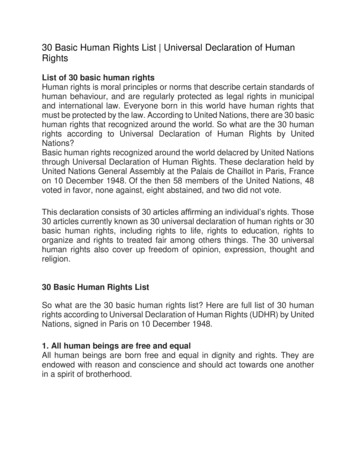
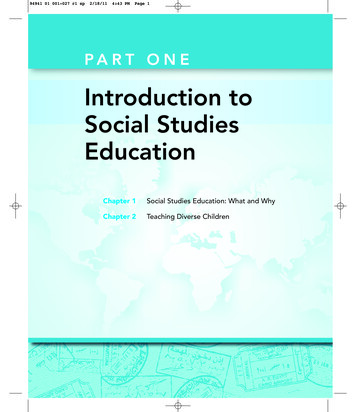
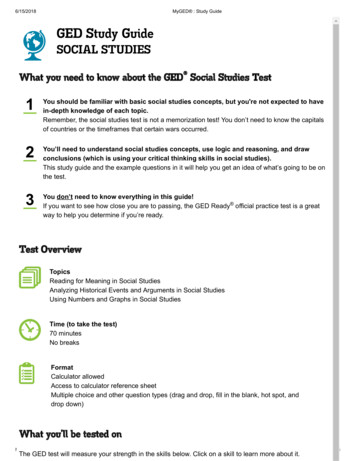
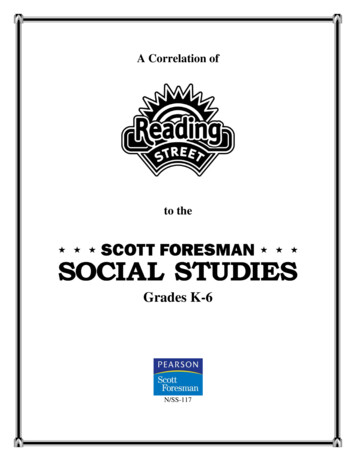
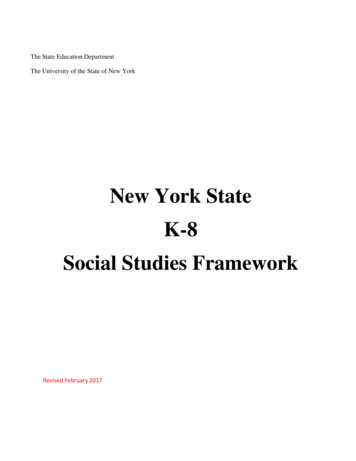


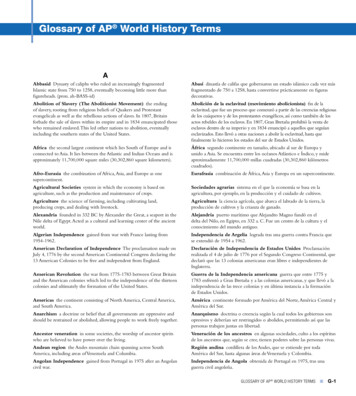
![[Final] Documenting the University of Pennsylvania’s .](/img/9/csgraubard-documenting-the-university-of-pennsylvanias-connection-to-slavery.jpg)